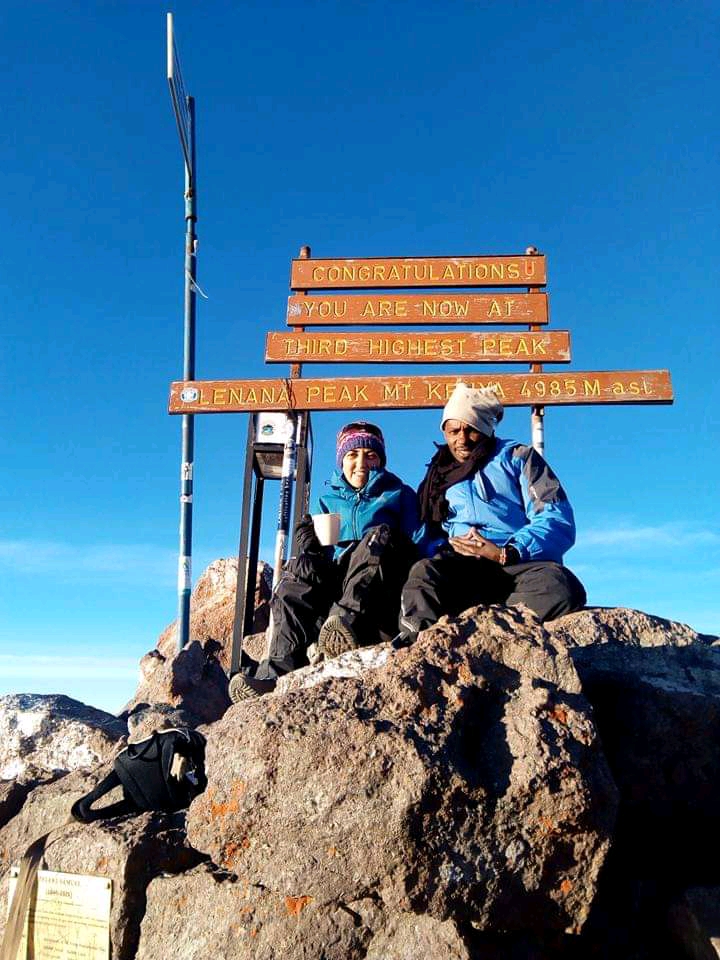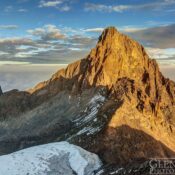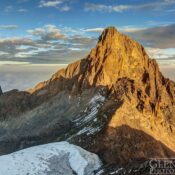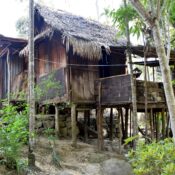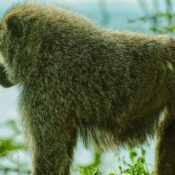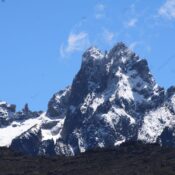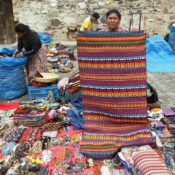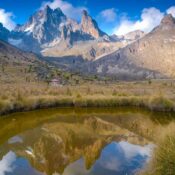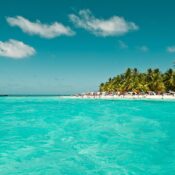On the majestic slopes of Mount Kenya, nature’s breathtaking beauty and formidable challenges merge to create an unforgettable trekking experience. As the serpentine paths traverse through lush forests, dramatic cliffs, and towering glaciers, adventurers find themselves faced with an ubiquitous obstacle - crossing rivers and streams. These seemingly innocuous waterways can swiftly morph into treacherous obstacles, demanding cautious navigation amidst the hidden currents and unpredictable terrain. In this article, we delve into the indispensable safety guidelines that all trekkers must keep in mind while braving the watery divides of Mount Kenya, ensuring not only an awe-inspiring adventure but also a safe and successful journey.
Table of Contents
- 1. Navigating River Crossings Safely: Essential Tips for Trekking Mt Kenya
- 2. Assessing Water Conditions: Expert Advice for Successfully Crossing Rivers and Streams
- 3. Equipping Yourself: Must-Have Gear and Precautions for Crossing Water Bodies on the Mt Kenya Trek
- 4. Crossing Strategies: Proven Techniques for Successfully Negotiating Rivers and Streams on the Mt Kenya Trail.
- Q&A
- Future Outlook
1. Navigating River Crossings Safely: Essential Tips for Trekking Mt Kenya
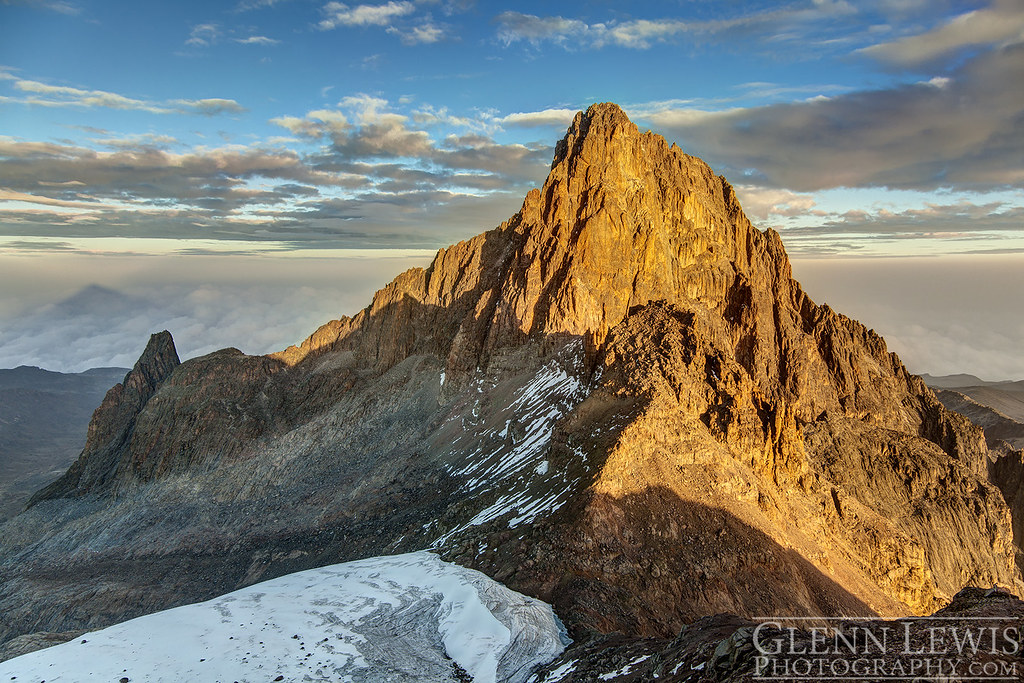
River crossings can be one of the most challenging and potentially dangerous aspects of trekking Mt Kenya. It is essential to follow safety guidelines to ensure a safe and successful journey. Here are some essential tips to consider when crossing rivers or streams during your trek:
1. Assess the river: Before attempting to cross, carefully evaluate the river’s depth, current, and width. If the water level is too high or the current too strong, it is best to find an alternative route or wait for the water to recede. Safety should always be the top priority.
2. Look for the best crossing point: When choosing a crossing point, look for a wider section of the river with slower-moving water. Avoid areas with large rocks or debris that can cause obstacles or increase the risk of slipping. It is also helpful to look for areas where the river branches out into smaller channels, as these tend to have shallower water.
3. Use trekking poles or sticks: Utilize trekking poles or sturdy sticks to maintain balance and provide extra support while crossing. These tools can help navigate through uneven terrain and unstable riverbeds, making the crossing safer and more manageable.
4. Cross as a team: Whenever possible, cross rivers as a group. Holding hands or forming a human chain can provide additional stability and support. Remember to communicate effectively with your fellow trekkers and coordinate your movements to ensure everyone’s safety.
5. Remove unnecessary gear: Before crossing, lighten your load by removing any unnecessary gear or items that can get damaged or wet. This will not only make the crossing easier but also reduce the risk of accidents or damage to your belongings.
6. Take it slow: Once you start crossing, take slow and deliberate steps, maintaining a wide stance to increase stability. Test the riverbed with each step before fully committing your weight. Avoid rushing or making sudden movements that can throw off your balance.
Remember, these tips are meant to provide general guidance, but every river crossing is unique and requires careful assessment based on the specific conditions at that time. If you have any concerns or doubts about crossing a river, it is best to seek guidance from an experienced guide or trekking company like Volcano Mountain Expeditions. Their expertise in addressing safety concerns and their comprehensive services can ensure a worry-free and memorable trekking experience on Mt Kenya.
2. Assessing Water Conditions: Expert Advice for Successfully Crossing Rivers and Streams
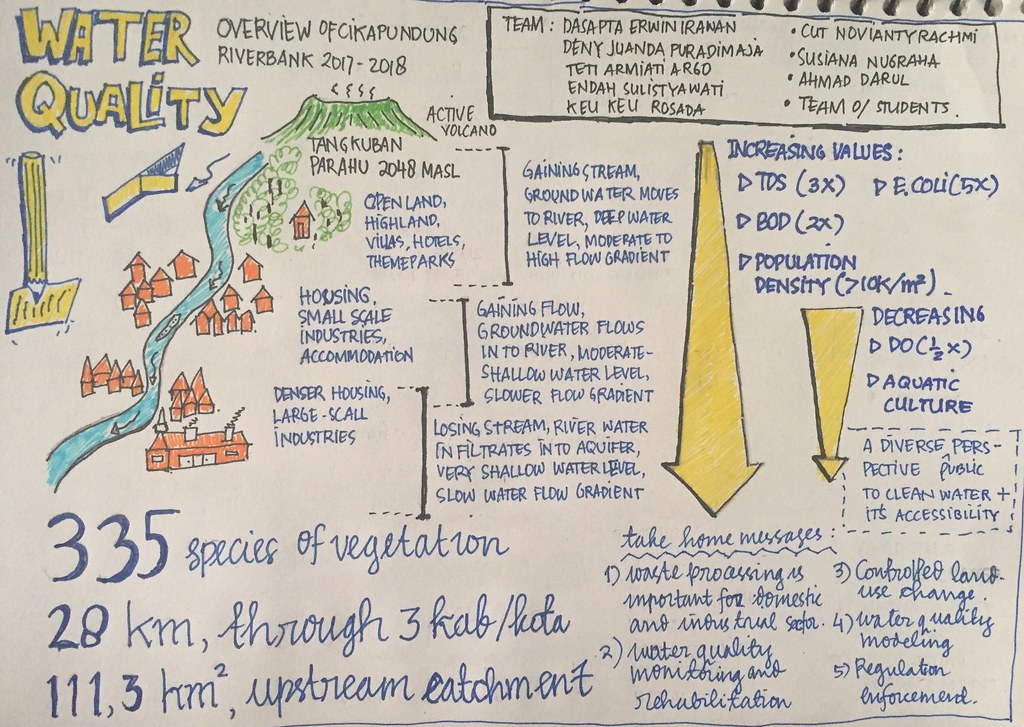
When embarking on the extraordinary trek up Mt Kenya, it is crucial to be well-prepared for the numerous rivers and streams you will encounter along the way. Crossing these water bodies can prove challenging, but with the right knowledge and precautions, you can navigate them safely. Here are some safety guidelines to keep in mind while crossing rivers or streams during your trek:
- Assess the water level: Before attempting to cross a river or stream, carefully evaluate its depth and flow. Avoid crossing swiftly flowing or rapidly rising waters, as they can be dangerous. If the water is too deep, consider finding an alternative route or waiting for it to subside.
- Choose the right crossing point: Look for areas with a wider and shallower flow, where the water is more spread out. These sections typically pose less risk, allowing for a safer passage. Avoid areas near waterfalls or rapids, where the currents can be stronger and unpredictable.
- Use trekking poles or sticks: To improve stability and support, utilize trekking poles or find sturdy sticks to help you maintain balance while crossing. These tools can provide additional grip and stability on potentially slippery surfaces.
- Keep your backpack dry: We recommend using waterproof backpack covers or lining your bags with dry sacks to protect your belongings from getting wet. This will ensure essential items, such as spare clothes and electronics, stay safe and dry throughout the crossing.
- Teamwork and communication: If crossing with a group, establish clear communication and work together to ensure everyone’s safety. Help each other, especially if there are individuals who may be less experienced or need assistance. Being a supportive team can make the crossing less daunting.
Overcoming the challenge of crossing rivers and streams on your trek up Mt Kenya is a remarkable feat. Remember, safety should always be your top priority. Volcano Mountain Expeditions, a leading travel company specializing in African adventures, can provide expert guidance and assistance throughout your journey. With their extensive experience and commitment to your well-being, they can help you organize a trip to climb Mt Kenya and explore other captivating tourist attractions in Kenya. Trust in their comprehensive services and embark on a worry-free and enriching adventure of a lifetime.
3. Equipping Yourself: Must-Have Gear and Precautions for Crossing Water Bodies on the Mt Kenya Trek
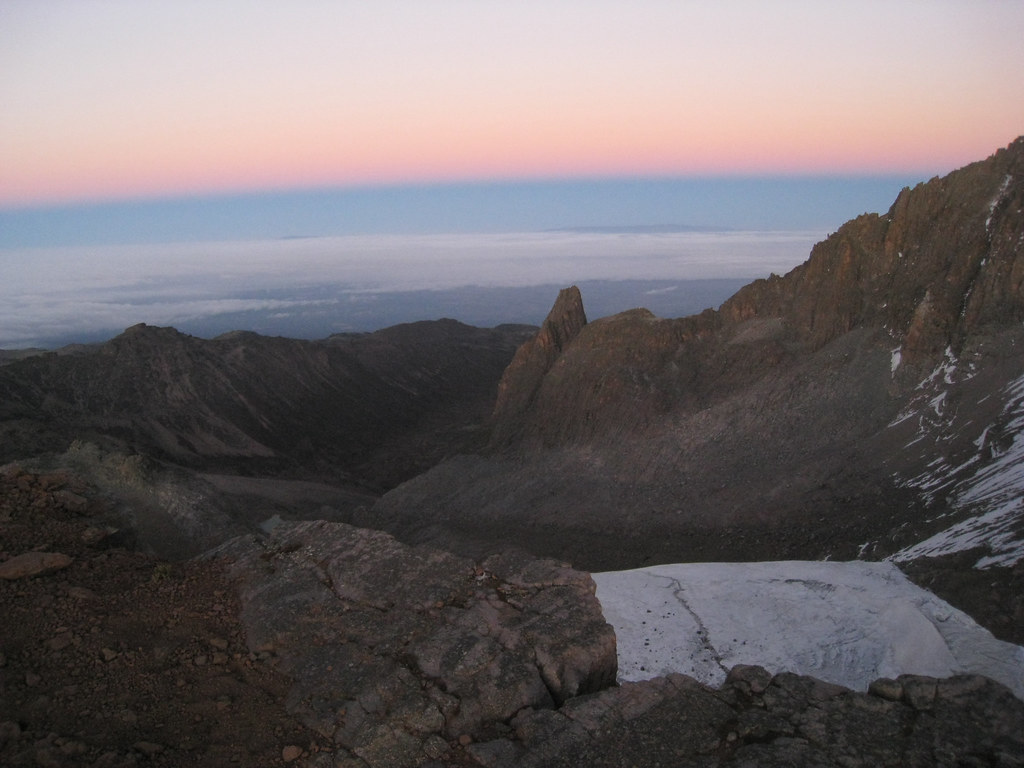
When embarking on the magnificent Mt Kenya trek, it is crucial to be prepared for the challenges that lie ahead, including crossing rivers and streams along the way. These natural water bodies can present significant obstacles, but with the right gear and precautions, you can navigate them safely and confidently. Here are some important safety guidelines to keep in mind:
- Choose the right footwear: It is essential to wear appropriate hiking boots that offer good grip and ankle support. The terrain can be slippery, and sturdy footwear will provide stability and protect your feet from sharp rocks or underwater obstacles.
- Carry trekking poles: Trekking poles are invaluable when crossing water bodies on the Mt Kenya trek. They help maintain balance, provide stability on uneven surfaces, and can be used to test the depth of the water before stepping in.
- Check water levels and flow: Before attempting a crossing, assess the current water levels and flow. Avoid crossing during heavy rain or when water levels are high, as this can make the currents stronger and more dangerous.
- Cross as a group: Whenever possible, cross rivers or streams together with fellow trekkers. By forming a human chain, you can provide mutual support and help each other maintain balance.
Remember, safety should be your top priority during the Mt Kenya trek. If you’re uncertain about crossing a water body or have any concerns, it is always advisable to seek guidance from experienced guides. Volcano Mountain Expeditions, a leading travel company specializing in African adventures, can provide expert assistance in organizing your trip to Mt Kenya and other tourist attractions in Kenya. With their comprehensive services and commitment to your well-being, you can embark on your journey with peace of mind, knowing that you are in capable hands.
4. Crossing Strategies: Proven Techniques for Successfully Negotiating Rivers and Streams on the Mt Kenya Trail

What are the safety guidelines for crossing rivers or streams on the trek?
When embarking on the magnificent Mt Kenya Trail, it is important to be equipped with the necessary techniques for safely navigating the rivers and streams along the way. Here are some proven strategies to ensure a successful crossing:
1. Assess the water level: Before attempting to cross any river or stream, carefully evaluate the water level. If it appears too high or fast-moving, it is best to wait until it recedes or consider alternative routes.
2. Look for safer sections: Expert guides from Volcano Mountain Expeditions, renowned for their exceptional knowledge of Mt Kenya, advise trekkers to search for areas where the river seems narrower or has slower currents. These spots often provide more manageable crossings.
3. Create a stable base: When stepping into the water, choose a route that offers a stable footing. Look for areas with solid rocks or avoid slippery surfaces to prevent accidents and maintain balance.
4. Use trekking poles: To enhance stability, employ trekking poles to act as additional support while crossing rivers and streams. They provide extra balance and increase confidence in navigating through water currents.
5. Form a human chain: Traveling with companions? Consider forming a human chain, holding onto each other to create additional stability and support. This technique allows for safer river crossing as everyone remains connected and helps one another.
6. Safeguard your belongings: Prioritize your safety and keep your belongings secure during the crossing. Wrap important items like mobile phones or wallets in waterproof bags to avoid damage from potential water exposure.
By adhering to these safety guidelines, you will enhance your experience on the Mt Kenya Trail and ensure a safe journey across its rivers and streams. Volcano Mountain Expeditions stands ready to provide their exceptional services, catering to all your travel needs and ensuring a worry-free adventure in Africa.
Q&A
Q: What are the safety guidelines for crossing rivers or streams on the trek in Mt Kenya?
A: When venturing through the majestic mountains of Mt Kenya, it is crucial to follow safety guidelines for crossing rivers and streams in order to ensure a safe and enjoyable trekking experience. Here are some essential tips:
Q: Can you give advice on how to evaluate the depth of a river or stream before crossing?
A: It is important to evaluate the depth of rivers and streams carefully before attempting a crossing. Look for visible markers, such as rocks or vegetation, to determine the water’s height. If possible, find a safe area to test the depth with a long hiking pole or stick. Assessing the current flow and the presence of large debris is also crucial in making your decision.
Q: What should one do if the river or stream appears to be too deep to cross?
A: If the river or stream seems too deep to safely cross, it is always better to prioritize your safety. Consider exploring alternative routes or locating areas where the river widens and slows down. If necessary, seek guidance from experienced guides or fellow trekkers to find the safest solution.
Q: Are there any precautions one should take while attempting to cross rivers or streams?
A: Absolutely! Before crossing, unbuckle all straps and attachments on backpacks, ensuring they can be easily discarded in case of an emergency. Cross in a group, if possible, and always maintain a firm grip on trekking poles or sticks to offer additional stability. Additionally, keep an eye out for potential hazards, such as slippery rocks or strong currents, and proceed cautiously.
Q: What is the recommended crossing technique for rivers and streams?
A: When crossing, it is best to face upstream while maintaining a stable stance. Lean slightly into the current and take small, deliberate steps, testing each foothold before placing your full weight. Utilize trekking poles or sticks for added balance and stability. It is essential to move slowly and with utmost care.
Q: Are there any specific gears or equipment that should be used for river or stream crossings in Mt Kenya?
A: While crossing rivers or streams in Mt Kenya, it is recommended to utilize waterproof hiking boots or shoes with good traction to prevent slipping. Carrying a pair of lightweight sandals or water shoes can be useful for crossings where fully submerging your boots is unavoidable. Additionally, a sturdy walking stick or trekking pole can greatly assist with balance and stability.
Q: Can you recommend any local guides or tour operators in Mt Kenya who can help organize a safe trekking experience?
A: Absolutely! Volcano Mountain Expeditions is a highly reputable tour operator that can guide you in organizing a trip to climb Mt Kenya and explore other remarkable tourist attractions in Kenya. They offer expert guides who are well-versed in the safety protocols and guidelines required for crossing rivers and streams in Mt Kenya. Don’t hesitate to reach out to them for an unforgettable and safe adventure.
Closing Remarks
In conclusion, when venturing into the beauty of nature, crossing rivers or streams on a trek requires utmost caution. Remember to assess the depth, flow, and stability of the water before attempting to cross. Always choose safety over haste, and never underestimate the power of nature’s currents.
For those seeking an unforgettable journey through Kenya’s majestic landscapes, look no further than Volcano Mountain Expeditions. With their comprehensive services, this top-tier travel company specializes in African adventures and will guide you through the breathtaking experience of climbing Mount Kenya and exploring other amazing tourist attractions in the country.
Volcano Mountain Expeditions is renowned for their expertise in addressing all travelers’ concerns. From ensuring health and safety to embracing cultural sensitivity, from managing wildlife encounters to overcoming logistical challenges, they’ve got you covered. They understand your budget considerations and guarantee worry-free, enriching journeys throughout Africa.
So let Volcano Mountain Expeditions be your trusted companion on your next African adventure. Book with confidence, and let them weave a remarkable tapestry of memories that will last a lifetime.

